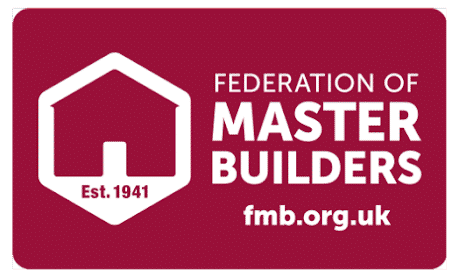New Build
We have a relatively new build house (now 8 years old) and over the years have noticed the odd hairline crack, which we have obviously put down to settlement as it was a new build. A little over 12 months ago we had a non load bearing blockwork wall removed between our kitchen and dining room. Our builder advised that no steel would be required as no load was being carried by what we were removing, and when the ceiling in this area was removed it was very clear that the joists were not supported by this wall as they ran the other way. It was tied to the external wall by a few wall ties obviously, but was not tied in to the other internal wall. Indeed, it really looked to be simply space dividing partition. However, over the last few months I have noticed more and more cracking, mainly at door heads, skirtings and windows, and would have thought after 8 years the house would have settled. Do you think the removal of a non load bearing internal blockwork wall would have had any effect, or is it more likely to still be settlement. Almost all the the hairline cracks are at first floor level, the worst ones being at the opposite site of the house to where this wall was, which seems odd.
I am trying to find out the total internal area of my house. Does this mean I have to add up all the rooms and add them or just measure the total area of 1 floor and multiply by 2 (as the house is 2 floors). Also do I include the area of the loft? It is a storage loft with light. Not a living space.
Answer.
============
Here are a few tips for calculating the total internal area of a house:
- Measure each room individually. Get the length and width and multiply them together to get the area for that room. Include all spaces like bedrooms, bathrooms, living rooms, kitchen, hallways, etc.
- For rooms with an irregular shape, divide them into simple rectangles/squares and calculate each segment separately then add them up.
- Add up the total area of each floor. So measure every room on the first floor and add up all the areas. Do the same for the second floor and any additional floors.
- Basements count if they are finished livable spaces. Do not include unfinished basement areas.
- Attached garages are not included in the internal livable space. Only measure garage if it has been converted to a living area.
- Storage lofts are generally not included unless they have been converted into usable living space with proper flooring, lighting, etc.
- Make sure to convert all measurements to the same unit (feet or meters) when calculating.
- Double check by roughly multiplying length x width of the overall structure as a sanity check on your detailed room-by-room calculation.
So in your case, do not include the unfinished storage loft. Calculate each room individually per floor and add them up to get the total internal area. Keep units consistent and double check against a rough overall calculation. Let me know if you have any other questions!
I have a new 3 bed home (build 2004). Builders initially said some cracking would occur as the property settles. I have over the years noticed cracks occuring on the plaster work just above the skirting on the stairs and around doorways and around windows and some ceilings. I have filled the cracks but noticed them reappearing. The house is on a incline. I have noticed a small hole under the foundatons of the property. Could it be subsidence. Which is the right propfessional to adequately assess the property?
=============
Answer
There are a few potential causes for the cracking you’re seeing in the plaster around doors, windows, stairs, and ceilings:
- Settlement – It’s normal for a new house to experience some settlement and cracking as it settles onto its foundation in the first few years. However, continued recurring cracking over many years could indicate an ongoing settlement issue.
- Subsidence – The small hole you’ve noticed under the foundation is concerning. Subsidence refers to the gradual caving in or sinking of the ground that the house’s foundation rests on. This can be caused by soil shrinkage, washout of soil, mining activities nearby, etc. The fact that your house is on an incline makes subsidence more likely.
- Structural movement – Shifting or movement in the home’s structural members like beams, floor joists, etc. can transfer stresses to the plaster and drywall causing cracking.
To properly diagnose the root cause, you’ll want to engage the services of a qualified structural engineer. They can thoroughly inspect the home, foundations, soil conditions, etc. and use technical investigative methods to determine if settlement, subsidence, structural defects or something else is leading to the cracking issues.
A general contractor or home inspector likely won’t have the specialized expertise to fully evaluate a potential subsidence or structural issue. A structural engineer is really the right professional to bring in. They can recommend solutions if problems are uncovered, whether that’s foundation underpinning, structural reinforcement, etc.
Acting promptly is important if subsidence is suspected, as it can be a progressive condition that worsens over time if not addressed. Don’t hesitate to get an expert assessment from a structural engineer.
I’ve heard that commissioning a build myself will leave me about £50k better off than if I bought from a developer. Is this true?
===============
Answer:
Building a house yourself using a self-build kit can often be cheaper than buying a house from a developer, but the actual savings will depend on various factors, such as:
- Location: Land prices and labor costs vary significantly across different regions.
- Size and complexity of the house: Larger and more complex designs will generally cost more.
- Quality of materials: Opting for higher-end materials will increase costs.
- Your own skills and time: If you can do some of the work yourself, you can save on labor costs, but this will require a significant time investment.
- Unexpected costs: Issues like poor weather, materials shortages, or unforeseen site problems can increase costs.
While a £50k saving is possible, it’s essential to create a detailed budget and plan for contingencies. Factors to consider include:
- Land costs
- Site preparation and foundations
- Kit house cost
- Labor costs (if not doing all the work yourself)
- Utilities connections (electricity, water, gas, sewage)
- Interior finishes and fittings
- Landscaping
- Planning and building regulation fees
- Insurance and financing costs
In summary, self-build kits can offer significant savings compared to buying from a developer, but the actual amount will vary depending on your specific circumstances and project. Thorough research and planning are essential to manage costs and avoid overruns.
New-build house 18 months old. When it is windy there is a creaking noise from around the edges of the roof area which is heard very distinctly in the bedrooms. The builder has brought in the roofing contractor who seems to have no idea what is causing it. They have decided to seal the joins in the roof lining membrane but I don’t this is the problem, although it does visibly ripple in windy conditions. Wondering if there are issues with the roof trusses which extend out over the external walls.
There are also intermittent cracking noises from the roof – is this due to normal settlement and drying out of roof timbers, and will it go in time.
I am wondering if we should get a structural engineer in to check that all has been built correctly.
Thanks for any advice.
===================
Answer:
The creaking noises and intermittent cracking sounds coming from the roof area of your new-build house are concerning and should be investigated thoroughly. Here are a few potential causes and recommendations:
1. Roof Truss Design and Installation Issues: The creaking noises could be caused by improper installation or design of the roof trusses, especially if they extend over the external walls. Improper bracing, undersized members, or incorrect spacing of trusses can lead to excessive movement and creaking during windy conditions.
2. Roof Sheathing and Fasteners: The cracking noises could be due to issues with the roof sheathing (plywood or OSB boards) or the nails/fasteners used to secure them. If the sheathing is not properly fastened or if there are gaps between the boards, it can lead to movement and cracking noises.
3. Roof Framing and Drying: As you mentioned, some of the cracking noises could be due to the normal settlement and drying out of roof timbers, particularly in a new construction. However, excessive cracking or creaking noises should not be dismissed as “normal.”
4. Wind Uplift and Roof Membrane: While the rippling roof lining membrane may contribute to the noises, it is unlikely to be the sole cause, especially if the noises are coming from the roof structure itself.
Given the age of the house and the severity of the noises you are experiencing, it would be advisable to bring in a structural engineer for a thorough evaluation. A professional structural engineer can inspect the roof framing, trusses, sheathing, and connections to identify any potential issues or deficiencies in the construction.
It is essential to address these issues promptly, as they may indicate more significant structural problems that could potentially worsen over time and compromise the integrity of the roof system.
If the structural engineer identifies any issues, they can provide recommendations for remedial work or reinforcement needed to resolve the problems and ensure the safety and longevity of your home.





